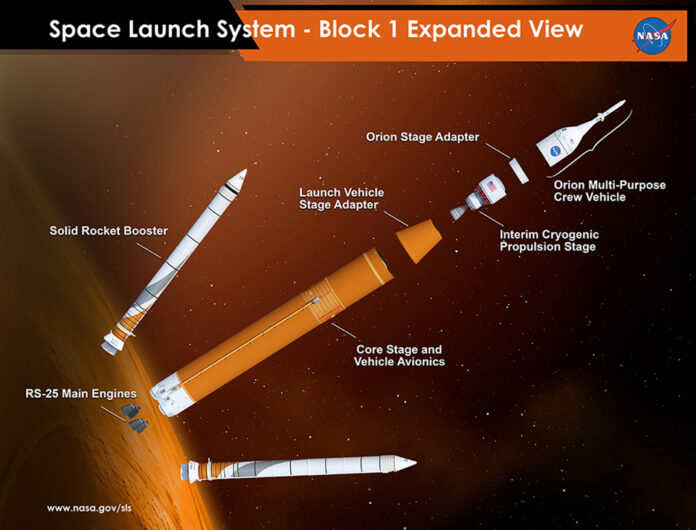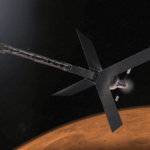If you are a fan of the situation comedy “The Big Bang,” then you know about Sheldon Cooper, a boy-man genius. The spinoff “Young Sheldon” featured an episode where an official from NASA came to speak to his school class. Sheldon raised his hand to ask a question, “If you can launch a rocket, why can’t you land it?” The NASA official’s response was “It’s complicated,” and handed Sheldon a logo patch.
Sheldon went home and worked on the mathematics for launches and recoveries, sent his calculations by mail to NASA and waited for a response. None arrived so his father drove the family from their East Texas home to Houston and NASA headquarters to support his son. Sheldon with persistence was able to meet with the same NASA official who had visited his class and walked him through the math. The NASA official was both puzzled and impressed. In the last scene of the sitcom, years later, we see Elon Musk, the founder of SpaceX, reading Sheldon’s notes from his NASA visit and hiding them in a desk drawer. I thought this story would be a good preamble to what follows.
NASA has been developing space technology since its founding back in the Eisenhower administration of the late 1950s. Here we are, more than 70 years later and NASA rockets can take off but cannot land.
The Space Launch System (SLS), NASA’s replacement for the Saturn V of the Apollo Program era, is a throwaway rocket. The European Space Agency (ESA) which has been in the space launch business for many decades and is ready to assemble its latest “state-of-the-art” launcher, the Ariane 6, is also a throwaway. Russia, the successor to the Soviet Union, and the first country to launch a satellite into space, recently launched the Angara A5, its latest heavy-lift launcher. Guess what? It’s a throwaway too. Launch systems are expensive. They waste resources when they cannot be reused. What’s wrong with this picture?
Two private companies, SpaceX and Rocket Lab have been proving that reusability is feasible. Soon others will join them, companies like Blue Origin with its current suborbital reusable rocket, New Shepard, and the soon-to-be-launched New Glenn which will be fully reusable. Even the United Launch Alliance (ULA), a company NASA has relied on for launchers for decades, is working on a reusable launcher after just retiring its last Delta IV. ULA’s successor, the Vulcan Centaur will have recoverable components when it begins to fly.
NASA did go down the reusability track after Apollo with the Space Shuttle. It was supposed to be a low-cost way of going to space with quick turnarounds. The design was futuristic with the spacecraft looking like an airplane. To fly it required mounting it on the side of a non-reusable fuel tank with two solid rocket boosters attached. This was a major design flaw that exposed the shuttle to falling launch debris, a persistent danger. NASA lost 14 astronauts and two Space Shuttles during the 30 years of the program. Refurbishment remained expensive and the best turnaround between flights was 78 days.
Reusability remains a desirable goal for national space programs including:
- The European Space Agency (ESA) which has yet to announce a reusable rocket timetable while developing components that can eventually lead to one. An engine prototype was tested last year.
- Russia’s Roscosmos which has boasted it will soon have a reusable rocket that will be cheaper to fly than the Falcon 9. We’ll see.
- China’s space agency with plans for a Long March rocket to be reusable. The earliest possibility of flying a reusable first stage could happen in 2025 or 2026.
- Japan’s space agency, JAXA, which has targeted 2030 for its first reusable.
- India’s ISRO with reusability in its plans
- And finally, South Korea.
Learning from the Space Shuttle design problem made NASA go back to the stacked design of the Saturn V era. That’s why the SLS eerily resembles its predecessor. But why reusability hasn’t been built into the technology for the first stage boggles my mind.
The Artemis 1 mission tested the SLS first stage and rocket boosters, the ICPS cryogenic propulsion stage, and the Orion capsule. The total cost of this throwaway was US $1.3 billion including the $107 million for the solid-state boosters leftover from the Shuttle Program.
The cost for subsequent Artemis missions has ballooned. Artemis 2 is scheduled for the fall of 2025 to fly four astronauts around the Moon. Artemis 3 will likely happen later than the 2026 date, probably 2027 or 2028. Each Artemis Program mission in current dollars comes with a $2.2 billion price tag just for the throwaway SLS rocket and its components. The Orion reusable spacecraft costs $1 billion. The ESA-built service module, a throwaway, costs $300 million. Ground system support is currently estimated to cost over $500 million per flight.
Meanwhile, NASA’s legacy technology built for reusability is now being shared with private companies. It is NASA technology adopted by SpaceX that allows Falcon 9 first stages to land with precision. Other design elements in the Falcon 9 are legacy NASA innovations as well. SpaceX has also been perfecting first-stage reusability to the point where the latest two Falcon 9 first stages have been flown 20 times and turnaround for reuse is taking as little as 21 days. To top it off it is NASA contracts and payments to SpaceX that have made it possible to fund much of its Falcon, Dragon and Starship development. Today, NASA launches crews to the multinational International Space Station (ISS) using Falcon 9 rockets and reusable Dragon spacecraft.
Another NASA-contracted company, Boeing, plans to join the space reusability fraternity with its Starliner spacecraft. Boeing describes the technology as 20th-century proven with 21st-century innovations. It will ride a ULA Atlas 5 non-reusable rocket to get to orbit.
When NASA stopped flying the Space Shuttle it had created the program to encourage commercial spacecraft development. Several companies were shortlisted. Boeing got the lion’s share of the money, $4.3 billion. SpaceX was given $2.5 billion. Today SpaceX flies four Dragon spacecraft on missions to the ISS as well as for private companies. It has 10 missions to ISS under its belt.
Boeing is four years late in its development of the Starliner and lists an inventory of three although only two will be operational for crewed missions to the ISS. It has flown two uncrewed missions over the last two years. The first had software issues and never made it to the ISS. The second got there. Hopefully, next week’s first crewed mission will meet expectations.
We may soon witness full reusability with the SpaceX Starship and Super Heavy booster. Its success will be a breakthrough milestone for future space exploration and a lunar and eventual Martian presence. Because NASA has plans with its Artemis Program to establish a permanent human presence on the Moon and calls this a stepping stone on the way to Mars.
The only way NASA’s ambition will be realized is with reusability. Otherwise, the dream is unaffordable. Designs like the SLS won’t cut it to support long-term lunar and Martian ambitions. These missions need fully reusable parts and the way NASA is going currently, the only thing that will be reusable will be its name painted on the side of the rockets and spacecraft that will fulfil the dream.
















